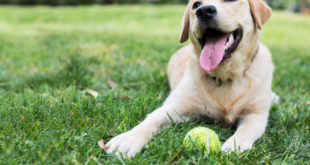If you’re a responsible dog owner, you know that your pup’s safety is a top priority. One of the most important ways to keep your furry friend safe is by mastering leash training. Whether you’re a seasoned pet parent or a first-time dog owner, the art of lassoing your pup can seem daunting. However, with a bit of patience and practice, you can train your pup to walk obediently on a leash. In this article, we will explore some key tips and tricks for mastering leash training and keeping your furry friend safe and happy on walks. So, grab your leashes and let’s get started!
Table of Contents
1. From Chaos to Control: The Art of Leash Training Your Canine
When it comes to leash training your canine, it can feel like moving from chaos to control. Here are some tips to help make the journey smoother:
– Begin with a properly sized and fitting collar or harness. It should be snug but not too tight. Your dog’s ID tags should be attached.
– Choose a calm, quiet environment without too many distractions.
– Introduce the leash gradually by letting your dog sniff it and get used to it before attaching it to the collar or harness.
– Start with short sessions and gradually increase the time and distance you walk.
– Use positive reinforcement, such as treats and praise, to encourage good behavior and redirect unwanted behavior.
– Be patient and consistent with your training.
Remember, leash training is not about controlling your dog, it’s about creating a bond and keeping them safe while enjoying time outside. With practice and patience, you and your furry friend can master the art of leash training.
2. Taming the Wild: Step-by-Step Guide to Leash Training Your Pup
Leash training your pup can be a daunting task, but it is essential for their safety and your peace of mind. Follow these steps to help tame the wild and teach your furry friend how to walk on a leash.
1. Introduce the leash gradually: Start by allowing your pup to sniff and explore the leash before attaching it to their collar. This will help them get used to the new object and avoid any anxiety.
2. Practice indoors: Begin practicing indoors by attaching the leash to your pup’s collar and walking around your home. Use treats and positive reinforcement to encourage them and make it a fun experience.
3. Move to the backyard: Once your pup is comfortable indoors, move outside to your backyard. This will help them experience different sights and smells without the distractions of the neighborhood.
4. Take short walks: Start taking short walks around your block, gradually increasing the distance as your pup becomes more comfortable. Encourage good behavior with treats and praise, and redirect bad behavior with a firm “no” and a gentle tug on the leash.
5. Always be patient and consistent: Remember that leash training takes time and consistency. It’s important to remain patient with your pup and celebrate small successes along the way.
By following these steps and being patient and consistent, you’ll be able to successfully leash train your pup and help them become a well-behaved and safe companion.
3. Lasso Your Pup Like a Pro: Tips and Tricks for Perfecting Your Technique
Having a well-trained pup isn’t just about how they walk on a leash – it’s also about how you manage that leash. If you aren’t comfortable handling the lead, your dog is likely to pick up on that nervous energy and act out. That’s why mastering the “lasso” technique is essential for every dog owner!
The first step to improving your lasso skills is the right equipment. Invest in a durable, high-quality leash that won’t snap or tangle. A leash made of nylon or leather is a great option. Be sure it has a sturdy metal clasp that won’t easily break under pressure. A retractable lead is not recommended for lassoing, as it doesn’t give you the necessary control you need.
Once you’ve got the right gear, focus on your technique. Stand tall, with your feet shoulder-width apart and your shoulders relaxed. Hold the leash firmly in your non-dominant hand, and then loop the excess around your opposite palm. Use your dominant hand to give gentle tugs to the lead when needed, but resist the urge to yank or pull too harshly. With a little practice and patience, you’ll soon be “roping” in your pup like a pro!
4. Lessons from the Experts: Insights on Leash Training for a Well-Behaved Pooch
Leash training is an essential aspect of your dog’s behavior, ensuring that your furry friend is well-behaved and safe during outdoor walks or runs. Expert dog trainers suggest that leash training should begin at a young age, and consistency is the key to achieving success. Here are some important insights that you can consider while training your pup to become a well-behaved pooch.
Positive Reinforcement: Dogs respond better to positive reinforcement techniques such as praising, giving treats, and showing affection. Your pooch should be rewarded with treats and praises every time it follows commands or walks politely on the leash. Never punish or scold your dog if it does not comply with your instructions as it can lead to fearful or aggressive behavior.
Show, don’t tell: Your furry friend follows your actions more than your words. Therefore, it’s essential to demonstrate the desired behavior that you want it to follow when on a leash. For example, when training your dog to walk to your left, you must walk to the left consistently and praise it for following your lead.
By implementing these insights into your leash training sessions, your pooch will evolve into a well-behaved and confident companion, making your outdoor walks a joyful adventure. Remember, patience and consistency are key when it comes to leash training, and the more time and effort you put into it, the better the results you’ll achieve.
5. The Rewards of Leash Training: How a Little Effort Can Go a Long Way in Training Your Furry Companion
Leash training may seem like a hassle to some, but it can pay off in a big way. Here are some of the rewards of leash training your furry companion:
- Better behavior: When a dog is trained to walk on a leash, they’re less likely to pull, jump, or misbehave while on walks. This can make walks more enjoyable for both the dog and the owner.
- Safer outings: By keeping a dog on a leash, you can prevent them from running into harm’s way. This is especially important in areas with a lot of traffic or other hazards.
- Bonding time: Leash training can be a great way to bond with your pet. It provides an opportunity for positive reinforcement, which can help build trust and cooperation between you and your furry friend.
Of course, leash training does take some effort. But the benefits are well worth it. By investing a little time and patience into training your dog to walk on a leash, you’ll be rewarded with a happier, better-behaved companion who can safely and comfortably join you on all your outings.
Now you can proudly take your pup for a stroll around the neighborhood. With the proper leash training techniques, you and your pup will have a stroll worthy of an outing with the Kennedys. Happy lassoing!
 Treat For Dog – Brain Training for Dogs, Dog Training & Obedience Discover Treat For Dog and get your pup on the path to smarter, happier, and healthier living with brain training for dogs.
Treat For Dog – Brain Training for Dogs, Dog Training & Obedience Discover Treat For Dog and get your pup on the path to smarter, happier, and healthier living with brain training for dogs.




